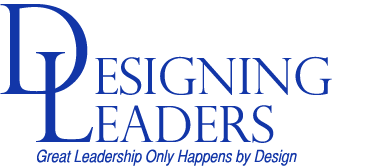Job Descriptions
How useful is your job description? Does your actual work reflect your official role? Is what you are doing anything like the job description that you replied to from a recruiter or a website? Do you even know what your job description say?
Many people we talk to, front-line managers as well as HR leaders, tell us an employee might look at a job description on Day One, then put it in a drawer and never reference it again. Many managers tell us they have not updated job descriptions in years, which is a little crazy when you think how quickly the working world changes.
Job descriptions can be a very useful tool for aligning employees and leaders with the organization’s actual needs. When you move people into new positions, especially if they have leadership and/or management responsibilities, you need to give them a clear job description. Otherwise, they might not know what they are supposed to be doing, and no one else is likely to know, either.
Some leadership positions are pretty easy to define. Lower-level leadership, however, might be a little tougher. What role does a Junior Art Director play in an ad agency? What responsibilities does a Lead Stylist have at a salon? Does an Account Manager have the same role in every office in your global consulting company? If YOU know what you expect of them, but nobody else does, then you are sure to face a lot of confusion.
The people in these positions need to know what they are supposed to do. What are they responsible for? What authority do they have to get it done? Understanding what they HAVE to do and what they CAN do is essential for anyone in a leadership role. This is especially true for your employees making the transition into leadership for the first time. If they have spent years developing their talents as individuals, but now are responsible for other people, you need to give them some pretty clear guidance.
Other employees need to know what people are responsible for, too. To whom do they go with a problems? Who can tell them what to do, and who can’t? If employees get conflicting guidance from different leaders/managers, especially in increasingly common cross-functional roles, whom should they follow? Things get pretty sketchy when your employees are not sure who’s in charge of what, and that kind of confusion can slow down the working process when people are not really sure what their expectations are. Make life easier for your employees by clearly defining their roles, and the roles of the leaders under whom they work.
Yes, even your non-leadership positions should have a clear job description…after all, people need to know the expectations and requirements under which they are working. It really becomes critical, though, for people in leadership positions at all levels, because they have more responsibility, and they really need to know what that responsibility is.
- Posted by
 Designing Leaders
Designing Leaders - Posted in Management
 Oct, 19, 2015
Oct, 19, 2015 Comments Off on Job Descriptions
Comments Off on Job Descriptions
Categories
- Book Reviews
- Change
- Communication
- COVID-19
- Creativity & Innovation
- Culture
- Diversity & Inclusion
- Employee Development
- Ethics
- Free Agents
- Health and Balance
- Leader Development
- Leading
- Management
- New Leaders
- Planning
- Recruiting and Retention
- Uncategorized
Archives
- August 2020
- July 2020
- June 2020
- October 2019
- September 2019
- August 2019
- July 2019
- June 2019
- May 2019
- March 2019
- February 2019
- January 2019
- December 2018
- November 2018
- October 2018
- September 2018
- August 2018
- July 2018
- June 2018
- May 2018
- April 2018
- March 2018
- February 2018
- January 2018
- December 2017
- November 2017
- October 2017
- September 2017
- August 2017
- July 2017
- June 2017
- May 2017
- April 2017
- March 2017
- February 2017
- January 2017
- December 2016
- November 2016
- October 2016
- September 2016
- August 2016
- July 2016
- June 2016
- May 2016
- April 2016
- March 2016
- February 2016
- January 2016
- December 2015
- November 2015
- October 2015
- September 2015
- August 2015
- July 2015
- June 2015
- May 2015
- April 2015
- March 2015
- February 2015
- January 2015
- December 2014
- November 2014
- October 2014


 Oct, 19, 2015
Oct, 19, 2015